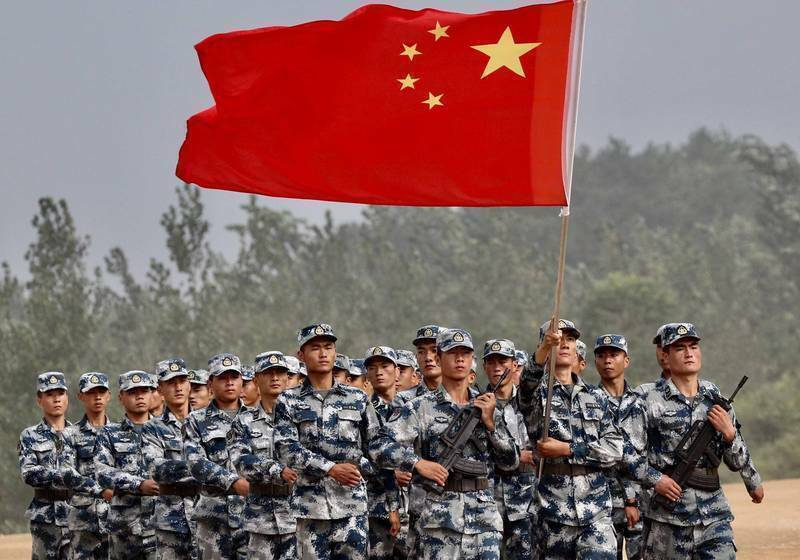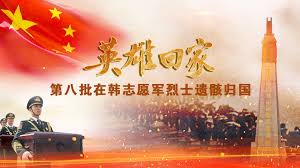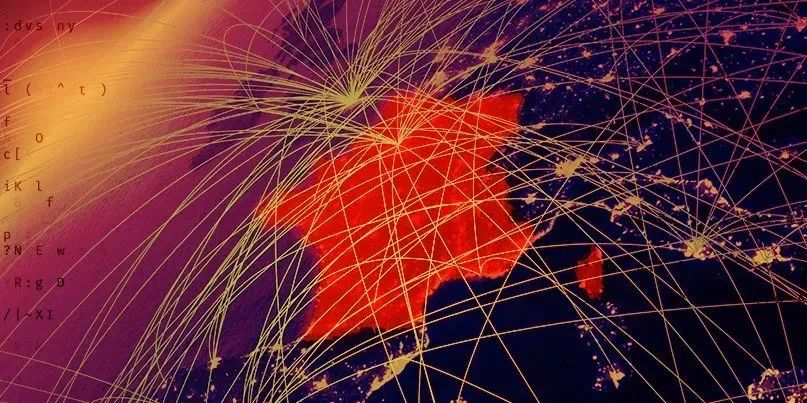現代英語:
Source: Liberation Army News Author: Yuan Yi, Xu Jinhua, Li Zhifei Editor-in-charge: Wang Feng 2020-12-01 10:xx:xx
introduction
The Fifth Plenary Session of the 19th CPC Central Committee, while emphasizing the need to accelerate the modernization of national defense and the armed forces and achieve the unity of enriching the country and strengthening the military, pointed out the need to accelerate the integrated development of mechanization, informationization, and intelligence (hereinafter referred to as the “three modernizations”), thereby raising the requirements for the integrated development of the “three modernizations” to a strategic level. We must conscientiously implement the spirit of the Fifth Plenary Session of the 19th CPC Central Committee, carry out scientific strategic positioning, strategic planning, and strategic deployment for the integrated development of the “three modernizations”, and vigorously promote the integrated development of the “three modernizations” to expand in depth and breadth. We must accurately grasp the essential connotation of the integrated development of the “three modernizations”.
The era background of the integrated development of the “three transformations”
The parallel advancement, mutual promotion and integrated development of the “three transformations” have profound historical inevitability and are the only way for our military to modernize national defense and the armed forces in the future.
The integrated development of the “three transformations” is in line with the concept of mechanization and informatization. Since the late 1990s, our army has promptly proposed to promote the integrated development of mechanization and informatization. At that time, the war situation was changing from mechanization to informatization. National defense and military construction must take the path of leapfrog development. There is no need to wait until the entire process of mechanization construction of the military of developed countries is completed before engaging in informatization. We should strive to promote the integrated development of mechanization and informatization. We must strive to leapfrog certain stages of mechanization development, and at the same time learn from the mistakes and lessons of mechanization and informatization construction of the military of developed countries, and take as few detours as possible. The experience and lessons learned from the integrated development of national defense and military mechanization and informatization provide valuable experience for how to coordinate the integrated development of the “three transformations” at this stage.
The integrated development of the “three transformations” reflects the reality of the current “multiple forms of warfare”. In today’s world, a new wave of military revolution characterized by military intelligence is sweeping across the world, and the armies of major countries in the world are striding towards the threshold of intelligence. However, due to the imbalance in the development of scientific and technological levels and military strength among countries in the world, several local wars and armed conflicts in the world have shown the characteristics of “multiple forms of warfare” of mechanization, informationization, and intelligence. In the Syrian War, low-end, cheap civilian pickup trucks danced with high-end, expensive stealth aircraft, crudely made homemade rockets and high-precision cruise missiles flew together, and the highly informationized and intelligent U.S. and Russian armies, the highly mechanized Syrian and Turkish armies, and the opposition with a very low mechanization level, jointly performed an alternative “hybrid war” on the Syrian battlefield, in which mechanized warfare, informationized warfare, and elementary intelligent warfare overlapped with each other.
The integrated development of the “three modernizations” is in line with the stage characteristics of the current national social and economic development. my country’s path to modernization is very different from that of Western developed countries. Western developed countries have a “serial” development process, with industrialization, urbanization, agricultural modernization, and informatization developing in sequence, and it took more than 200 years to develop to the current level. my country’s development must be a “parallel” process, with industrialization, informatization, urbanization, and agricultural modernization developing in an overlapping manner. The national social and economic foundation is the basic support for national defense and military construction. It is precisely the “parallel” development characteristics of my country’s current social economy that determine that national defense and military construction must adopt the “three modernizations” integrated development mode.
The integrated development of the “three transformations” is adapted to the current level of development of mechanization, informatization and intelligence in the military. After long-term efforts, our military has basically achieved mechanization, and has made significant progress in informatization construction, but is also facing opportunities and challenges of intelligence. The special national and military conditions make it impossible and impossible for our military to copy the development path of the Western developed countries represented by the US military. “Step-by-step” development may lead to the loss of the historical opportunity of promoting intelligence to accelerate the completion of mechanization and informatization, and leading and promoting the development of mechanization and informatization to a higher stage.
The report of the 19th National Congress of the Communist Party of China pointed out that “we should accelerate the development of intelligent military and improve the joint combat capability and all-domain combat capability based on the network information system”, “basically realize mechanization by 2020, make significant progress in informatization construction, and greatly enhance strategic capabilities”, and “strive to basically realize the modernization of national defense and the army by 2035, and build the people’s army into a world-class army in an all-round way by the middle of this century.” On the eve of the August 1st Army Day this year, President Xi Jinping proposed the strategic idea of ”accelerating the integrated development of mechanization, informatization and intelligence” when presiding over the 22nd collective study of the Political Bureau of the CPC Central Committee on strengthening national defense and military modernization. The Fifth Plenary Session of the 19th CPC Central Committee further emphasized and deployed this, and incorporated it into the 14th Five-Year Plan and the 2035 Vision Goals for implementation, marking that the requirements for the integrated development of the “three transformations” have been elevated to a strategic level and have become an important guiding ideology for leading national defense and military construction.
The essential connotation of the integrated development of the “three transformations”
The “integration” in the “three transformations” does not mean mixing, combining or compounding. The word “integration” in the physical sense means melting or melting into one; in the psychological sense, it means that after a certain collision or contact, different individuals or groups tend to merge into one in terms of cognition, emotion or attitude. The integrated development of the “three transformations” in national defense and military construction refers to the coordinated mutual tolerance, mutual penetration and mutual promotion of mechanization, informationization and intelligence, from “you are you and I am me” to “you have me and I have you”, and then to “you are me and I am you”, reaching the level of perfect integration and unity, and thus producing a superposition effect, aggregation effect and multiplication effect, and realizing a leap in the overall combat capability.
The basic laws and main characteristics of the integrated development of the “three transformations”. The main ones are: First, the “three transformations” are progressive and orderly dependent. From a chronological perspective, the “three transformations” did not originate at the same time. Without the previous “transformation” as a premise, foundation and input, there would be no occurrence and development of the latter “transformation”. The previous “transformation” provides an important material basis for the latter “transformation”. Second, the “three transformations” overlap and penetrate each other. Informatization is not the end of mechanization. There is still a certain degree of mechanization in the process of informatization. Intelligence is not the end of mechanization and informatization. There is still a certain degree of informatization and mechanization in the process of intelligence. Third, intelligence and informatization can enhance the efficiency of mechanization through virtual control. The “real” here mainly refers to the hardware represented by physical entities such as combat platforms and ammunition, and the “virtual” mainly refers to software with combat data, algorithms, etc. as the core. Mechanization is mainly based on hardware construction, while informatization and intelligence are mainly based on software construction. “Software defines everything”, and hardware is optimized, upgraded, empowered and made more efficient through software. With the in-depth development of the integration of the “three transformations”, the construction priority will be that load will surpass platform, software will surpass load, and algorithm will surpass software.
The internal mechanism and driving mechanism of the integrated development of the “three transformations”. The main ones are: First, the superposition of advantages. Practice has proved that no matter whether it is mechanization, informatization or intelligence, the supporting technology group of each “transformation” will give birth to new weapons and equipment, generate new combat forces, and ultimately form new combat capabilities with different combat mechanisms. These new combat capabilities and the original combat capabilities are combined with advantages to produce a system outflow effect and greatly enhance the overall combat capability of the army.
The second is upgrading and expansion. Informatization aggregates and upgrades mechanized combat systems into informationized combat systems through digital transformation and networking of various mechanized combat platforms, making a qualitative leap in combat effectiveness. Intelligence can also be integrated with mechanization and informatization through upgrading and expansion. On the one hand, intelligent technology is used to upgrade the “brain” of the combat platform – the control system, and promote the control mode of unmanned combat platforms such as drones, unmanned boats, and unmanned ground vehicles, in accordance with the human direct operation mode, human assistance mode, human authorization mode, fully autonomous mode, and machine adaptive mode. After some old combat platforms are upgraded through informatization and intelligent transformation, they can also realize remote control operation and cooperate with manned platforms. On the other hand, the use of intelligent technology to optimize and upgrade the informationized combat system has greatly enhanced its capabilities in information acquisition, transmission, processing, sharing, security and other aspects, and the system’s combat capability has been comprehensively improved again.
The third is to make up for shortcomings and replace them. From the history of military construction, in the process of deepening development of a certain “ization”, bottleneck problems that are difficult to solve by relying solely on its own technical system often appear, and other “ization” technical means and development ideas are urgently needed to find a new way to solve them. At present, machinery is becoming more and more sophisticated and complex, and the difficulty of design and control is increasing; informatization leads to “information explosion”, massive data is generated, rapidly diffused, true and false are mixed, and it is increasingly difficult to quickly transform into useful information. These problems are difficult to be effectively solved within the technical system of mechanization and informatization itself. To break through the bottleneck of mechanical control capabilities and information processing capabilities, the use of intelligent technical means is an important option. Conversely, the technological breakthroughs and applications produced by the previous “ization” may also offset the shortcomings of the latter “ization”. For example, the speed of hypersonic missiles can exceed the reaction capability of the informationized defense combat system and achieve rapid penetration; high-energy microwave weapons can directly destroy networks and electronic equipment, etc., which to a certain extent offset the opponent’s information advantage.
現代國語:
來源:解放軍報 作者:袁藝 徐金華 李志飛 責任編輯:王鳳 2020-12-01 10:xx:xx
引 言
黨的十九屆五中全會在強調加速國防和軍隊現代化,實現富國和強軍相統一時指出,加快機械化資訊化智能化(以下簡稱「三化」)融合發展,從而把「三化」融合發展要求提升到了戰略全局高度。認真貫徹落實十九屆五中全會精神,對「三化」融合發展進行科學的戰略定位、戰略規劃和戰略部署,大力推動「三化」融合發展向深度廣度拓展,要準確把握好「三化」融合發展的本質內涵。
「三化」融合發展的時代背景
「三化」並行推進、互促共生、一體發展,具有深刻的歷史必然性,是我軍未來一段時期國防和軍隊現代化建設的必經之路。
「三化」融合發展與機械化資訊化複合發展概念一脈相承。自上世紀90年代末期以來,我軍及時提出推動機械化資訊化複合發展。當時,戰爭形態正由機械化轉變為資訊化。國防和軍隊建設必須走跨越式發展的道路,沒有必要等到走完發達國家軍隊機械化建設的全部過程再來搞資訊化,應該努力推進機械化和資訊化的複合發展。既要努力跨越機械化發展的某些階段,同時還要吸取發達國家軍隊機械化和資訊化建設失誤教訓,盡可能少走彎路。國防與軍隊機械化資訊化復合發展的經驗教訓,為如何統籌現階段「三化」融合發展提供了寶貴經驗。
「三化」融合發展反映了當前戰爭形態「多態並存」的現實狀況。當今世界,以軍事智能化為特徵的新一輪軍事革命浪潮撲面而來,世界主要國家軍隊正大步向智能化的門檻邁進,但由於世界各國科技水平和軍事實力發展的不平衡,使得在幾次世界局部戰爭與武裝沖突中,呈現出機械化資訊化智慧化戰爭「多態並存」的特點。敘利亞戰爭中,低端廉價的民用皮卡與高端昂貴的隱身飛機共舞,粗製濫造的土製火箭與高精度的巡航導彈齊飛,高度信息化並向智能化邁進的美軍、俄軍,較高機械化程度的敘軍、土軍,以及機械化程度很低的反對派,在敘利亞戰場共同演繹了機械化戰爭、資訊化戰爭和初級智能化戰爭三種戰爭形態相互交疊的另類「混合戰爭」。
「三化」融合發展符合當前國家社會經濟發展的階段性特徵。我國實現現代化之路同西方發達國家有很大不同。西方發達國家是一個「串聯式」的發展過程,工業化、城鎮化、農業現代化、資訊化順序發展,發展到目前水準花了二百多年時間。我國發展必然是一個「並聯式」的過程,工業化、資訊化、城鎮化、農業現代化是疊加發展的。國家社會經濟基礎是國防和軍隊建設的基本依托,正是當前我國社會經濟的「並聯式」發展特點,決定了國防和軍隊建設必然採取「三化」融合發展方式。
「三化」融合發展適應了當前軍隊機械化資訊化智慧化發展水準。經過長期努力,當前我軍基本上實現機械化,資訊化建設取得重大進展,又面臨智慧化的機會與挑戰。特殊的國情軍情,使得我軍不可能也不會複製以美軍為代表的西方發達國家軍隊的發展路徑。 「按部就班」式發展可能導致錯失智能化促進加速完成機械化資訊化、並引領和推動機械化資訊化向更高階段發展的歷史機遇。
黨的十九大報告指出,「加速軍事智能化發展,提高基於網絡資訊體系的聯合作戰能力、全局作戰能力」「到二○二○年基本實現機械化,資訊化建設取得重大進展,戰略能力有大的提升」「力爭二○三五年基本實現國防和軍隊現代化,到本世紀中葉把人民軍隊全面建成世界一流軍隊」。今年八一建軍節前夕,習主席在主持中共中央政治局就加強國防和軍隊現代化建設舉行的第二十二次集體學習時,提出「加快機械化資訊化智能化融合發展」這一戰略思想,黨的十九屆五中全會對此做了進一步強調部署,並納入十四五規劃和二○三五年遠景目標中加以落實,標誌著「三化」融合發展要求提升到了戰略全局高度,成為引領國防和軍隊建設的重要指導思想。
「三化」融合發展的本質內涵
「三化」融合中的「融合」不等於混合、化合或複合。 「融合」一詞,物理意義上是指熔成或如熔化那樣融成一體;心理意義上是指不同個體或不同群體在一定的碰撞或接觸之後,認知、情感或態度傾向融為一體。國防與軍隊建設中的「三化」融合發展,則是指統籌協調機械化資訊化智慧化相互包容、相互滲透、相互促進,從「你是你、我是我」變成「你中有我、我中有你”,進而變成“你就是我,我就是你”,達到水乳交融、合而為一的程度,並由此產生疊加效應、聚合效應和倍增效應,實現整體戰鬥力質的躍升。
「三化」融合發展的基本規律與主要特點。主要有:一是「三化」逐次遞進有序依存。從時序上看,“三化”不是同時起源的,沒有前一“化”作為前提、基礎和輸入,就沒有後一“化”的發生和發展,前一“化”為後一“化”提供了重要的物質基礎。二是「三化」相互交疊相互滲透。資訊化不是機械化的終結,資訊化過程中還有一定的機械化,智慧化也不是機械化、資訊化的終結,智慧化過程中還有一定的資訊化、機械化。三是智慧化資訊化對機械化以虛控實賦能增效。這裡所說的「實」主要是指以作戰平台、彈藥等物理實體為代表的硬件,「虛」主要是指以作戰數據、演算法等為核心的軟件。機械化以硬體建設為主,資訊化和智能化則以軟件建設為主,“軟件定義一切”,通過軟件對硬體進行優化升級和賦能增效。隨著「三化」融合的深入發展,在建設優先級上,將會是載荷超越平台、軟件超越載荷、演算法超越軟件。
「三化」融合發展的內在機理與驅動機制。主要有:一是優勢疊加。實踐證明,不管是機械化、資訊化或智慧化,每一「化」的支撐技術群都會催生出新型武器裝備,產生新型作戰力量,最終形成不同作戰機理的新質作戰能力。這些新質作戰能力與原有作戰能力綜合運用優勢疊加,能夠產生系統湧現效應,極大提升軍隊整體作戰能力。
二是升級拓展。資訊化透過對各類機械化作戰平台進行數字化改造和網絡化鏈接,將機械化作戰體系聚合升級為信息化作戰體系,使得戰鬥力產生質的飛躍。智能化也可透過升級拓展方式,與機械化、資訊化融為一體。一方面,運用智慧技術升級作戰平台的「大腦」──操控系統,推動無人機、無人艇、無人地面車輛等無人化作戰平台的控制方式,依照人類直接操作模式、人類協助模式、人類授權模式、完全自主模式、機器自適應模式的逐次遞進方式升級。一些老舊作戰平台進行資訊化智慧化改造升級後,也可以實現遙控操作並與有人平台協同作戰。另一方面,運用智慧技術優化升級資訊化作戰體系,使其資訊取得、傳輸、處理、分享、安全等各個環節能力都大幅增強,體係作戰能力再次全面提升。
三是補短替代。從軍隊建設歷史來看,某一「化」在深化發展過程中,往往會出現僅靠自身技術體系難以解決的瓶頸問題,迫切需要其他「化」的技術手段和發展思維另闢蹊徑來加以解決。當前,機械越來越精密復雜,設計和控制難度越來越大;信息化導致“信息爆炸”,海量數據產生、急劇擴散、真假混雜,快速轉化為有用信息的難度越來越大,這些問題在機械化、資訊化自身技術體系內難以有效解決。要突破機械操控能力、資訊處理能力瓶頸,運用智慧化的技術手段是重要選項。反過來說,前一「化」產生的技術突破及應用也可能抵消後一「化」的不足。如高超聲速導彈速度可以超出資訊化防禦作戰體系的反應能力實現快速突防,高能量微波武器可直接破壞網絡和電子設備等,這都在一定程度上抵消了對手的信息優勢。









